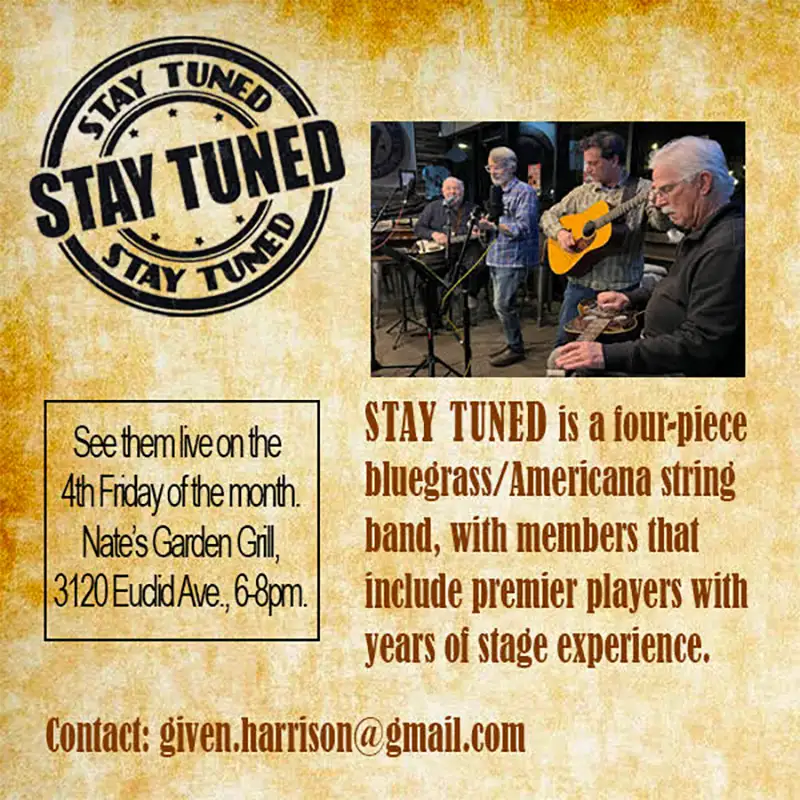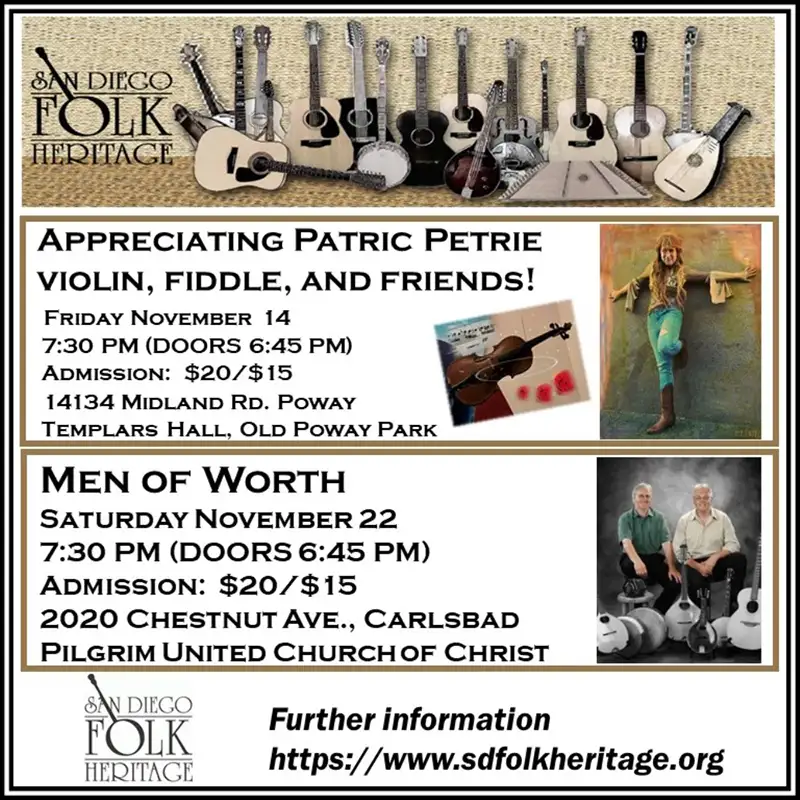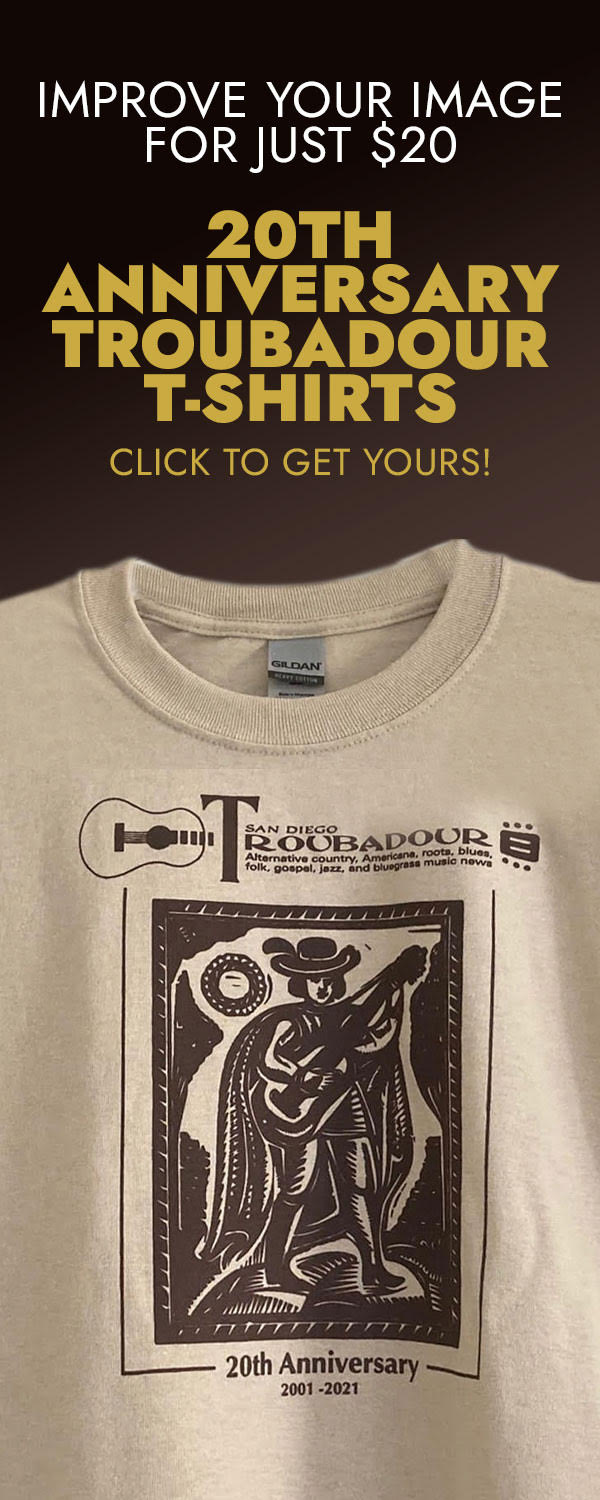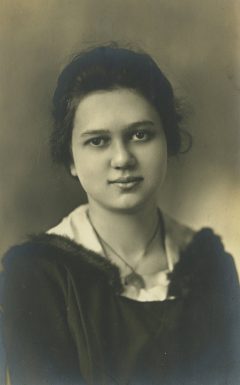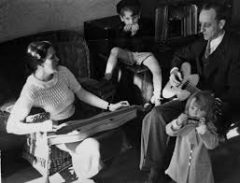Yesterday And Today
Fanfare for an American Maverick: Ruth Crawford Seeger
Say the name, and the action is clear: Xerox, to copy; Google, to search; Maverick, to go it alone. The latter (the refined term is eponym) comes by way of Samuel Maverick, an early twentieth-century Texas drover who refused to brand his calves. Without a burnt-flesh insignia, cowboys couldn’t tell one cow from another. But, since Sam so hated impaling animals and upset the cattle business because of it, we honor him with an Americanly distinct word. Move from commerce to art, and we mark the hides of many modern American composers similarly–crazy-craft originals who include John Cage, on stage, in a kindergartener’s chair, performing his seriously rinky-dink “Suite for Toy Piano”; Charles Ives, in Three Places in New England, imagining a boy who wanders away from a July Fourth picnic and hears two Revolutionary War bands marching into each other while holding their tunes, one, “The British Grenadiers” and the other, “The Battle Cry of Freedom”; Pauline Oliveros and her Deep Listening Band, improvising on drone instruments inside caves, cathedrals, and underground cisterns to link environment, sound, and human rapture.
The unpopular styles of our musical outlaws are legion. Say the name, and the aversion is clear: avant-garde, performance art, dissonant counterpoint, polytonality, serialism, furniture music, day-long drones, music/text and music/video installations. Breaking with tradition, the brave, recalcitrant composers behind this madcapery made an oft-hard-to-audience music, categorizing, for better and worse, his or her stuff as modern, postmodern, minimalist, and experimental. There’s more unheard music in our culture than meets the ear.
Until recently, we did not associate or add women to this maverick club. Not because they didn’t exist but because they received neither invitation nor appointment by their male gatekeepers. Men have the agency to rebel; women, having stepped out so far, have their agency reeled back in by (in those days) raising children, cleaning house, observing holidays, baking turkeys, listening to the family’s stale jokes, all things that (help) keep the patriarchy afloat.
No woman wedged herself into the maverick cult more forcefully than Ruth Crawford, an American composer (1901-1953) who wrote modernist pieces in the 1920s and early 1930s and who turned the tables on her compositional talent, becoming, in the second half of her life, a transcriber, arranger, and teacher of American folksongs. Her career bridges dissonance and daycare, the latter, animal and Christmas and kids’ tunes: Come on, gang, “Let’s Build a Railroad,” and looky here, there’s “Coal Dust on the Fiddle.”
Crawford’s salad days comprise, roughly, the decade 1925 to 1935. Every school kid knows this time spans the successive upheavals of a roaring stock market and crash, a Great Depression that worsened before it got better, and the government’s slow but eventual bailout. It’s more difficult to unpack how this decade mirrors and makes music history as well. Crawford’s pendulum-like life encapsulates this difficulty.
First, a nod to Ives, our ur-American artist, the great unbranded one. Active a generation before Crawford, Ives, as the late Eric Salzman noted in his seminal book, Twentieth-Century Music: An Introduction, was a “wildly visionary” composer who “revels in contradictions” and who felt no need to “abandon tonality (or anything else).” He penned his dissonant densities, often impossible to play (or hear), by simultaneously sounding children’s hymns and Yankee band marches. His pieces sweep from sentimentality to tone-row complexity, unleashing a kind of manic jest. His was a music that embodied the confusion and noise of the industrial American city and its longing for a halcyon innocence. Crawford inherited Ives’ gambit, crafting her own experimental forms and theory-based puzzles.
In her twenties, the conservatory-trained Crawford–her face in photos then is half-wistful, half-serious, a look between gardenia-smelling and rose-pruning–wrote a couple dozen chamber works and song cycles, each with a snappish atonal bite buttressed by the jagged, additive rhythms of jazz. Lines and counterpoint get going, barely develop, and are soon over–like poetry. The core idea is, non-triadic chords and chromatic counterpoint are beautiful in their own right–if we can lose our prejudicial expectations. Clashing sonorities, say, a chord built on two tritones (C-F#-D-A#), grounds the music in sonic, not progressive, time, forgoing harmonic resolution. Resultant dissonances are fueled by polyrhythms, serial rows, and a monkish avoidance of major/minor chords. A music that has so much going on in each present moment need not try and get anywhere. (This “not getting anywhere,” a compositional tenet of Terry Riley, is the essence of Eastern classical music.)
***************
The best of Crawford’s modernist works is String Quartet 1931. Here the idea is to write against tonal traditions, against tension/resolution, emphasizing atonal arrays. Its sounds, once seemingly ominous with their sudden shifts, clustering compaction, and dark self-interest, are, to my ear, mostly pleasurable, though the pleasure is acquired. The modernist composer stresses the nonrepetitive; thus, different pitches, sometimes all 12, are played before any one is repeated: to insure disharmony. Henry Cowell, a musical philosopher/ composer during Crawford’s time, defined the process as “one of negation and contrariness.”
Crawford subjected other parameters to further contrariness. The rhythm is unironed; beats, subdivided into 3, 4, 5, or 6 notes and played against each other (polyrhythm), create dizzying patterns. Not much toe tapping. When chords happen, they land on tritones, seconds, sevenths, never on thirds. I say “when” after one of Crawford’s insights: “Music which is thought horizontally is usually more difficult than that which is thought vertically.” This means that melodic or contrapuntal lines are vertical, eventually finding their cadential rest. Crawford abandoned this classical premise by letting the horizontal rule, a moving wall of random tones. Thus, the difficulty. There is no harmonic repose.
It’s all quite Scriabinesque, a dense chromaticism (I’m not sure it’s “negative” but it sure is “contrary” to our well-tempered ears) in which the Russian master specialized and Crawford copied. One parameter she made her own is structure: her pieces are short; once the structural case is made, she moves on. Her four-movement Quartet is 12 minutes.
Its most innovative portion is the Andante–one made entirely of tone clusters whose gradual pitch shifts are matched by dynamic changes that occur at successive phrases in the four strings, a stepwise progression from measure to measure. The effect is sonically palpable, like a calm sea at night, a foggy texture, densifying slowly, only the bobbing of the boat detectable.
(I realize there’s a problem with dissonant music. Listeners may find its studious purity painful. But dissonance is part of music. It’s just that our ears fail the familiarity test. What is “new music”? A change in our speciation, that is, in our musical consciousness. It can’t be done with a wave of the wand. Still, most current films, big-budget and independent, have explosive soundtracks–highly dissonant, highly synthetic, highly nerve-wracking, during which the viewer/listener is supposed to feel earth-ending or suicidal anxiety.)
Another work, reflecting Depression-era realities and Crawford’s exploratory agility, is the proletarian fight song, “Chinaman, Laundryman,” from a poem by the Chinese dissident H. T. Tsiang. An oddity of revolutionary agitprop, her piano accompaniment tinkles along like a child skipping through the forest, lost in a this-way/that-way drift. The lyric is sung-spoken (using Arnold Schoenberg’s technique, Sprechstimme) and beats a sermonic path with declamations and shouts and an ironic patter, written by a woman for a woman vocalist about women’s work:
Wash! Wash!
Why can I wash away the dirt of others’ clothes
but not the hatred of my heart?
Iron! Iron!
How can I smooth away the wrinkle of others’ dresses
but not the miseries of my heart?
Dry! Dry!
Why do clothes dry but not my tears?
***************
What’s unusual about Crawford is that we tell her composer’s life story to assert her womanhood–in contrast to the male composer’s story whose manhood tale lies dormant, is unasserted. In 1929, she studied with the musicologist Charles Seeger who recognized her original ideas and modernist plots. He wrote of her music, seemingly surprised, as having “the joyous play of the intellect in it.” (It’s no secret that Seeger, 15 years older, valued intellectualized music; he had a scientific mind and peerless analytic strategies to boot.) Crawford said of his encouragement that “my work began at last to take a ‘handleable’ shape, to present itself in some sort of intelligible continuity.”
Still, she was aware of her gender’s absence–no, wholesale exclusion–from composition history. To fight back, she rallied against men’s idea of “female education,” “that most sacred, that most precious, that inalienably rightful possession of every male–they guard it with an iron grip.” She thought things like a woman’s purity, a man’s notion that women “pursue” and men “beckon,” and men’s allowance of women to “putter about in politics” were all “smoke-screen(s).” She loathed composer competitions and musical cuteness.
Nonetheless, in the early 1930s, Crawford shared Seeger’s elevation of musical innovation over musical performance: she was in love with–and in awe of–his mind. She never back-seated her musical appetites to his success and soaked up his seismic influence. Seeger taught the first American course in musicology (the academic study of composition, performance, history, and research) at UC Berkeley in 1916 and the first course anywhere in ethnomusicology (the study of a culture’s indigenous music) in 1931. Twin pioneers, Seeger and Crawford, working piston-and-rod as composer and researcher, discovered what slumbered in themselves, in the other’s passion for modernism.
In 1931, after winning two Guggenheims for European study, the first woman ever to do so, Crawford married Seeger and threw herself into a fervor of new-music creativity. Alas, this personal storm was buffeted by a much fiercer common gale: the Depression. Their experiments ignored, modernist invention scooted aside and in musical nationalism took over. In response, husband and wife stopped writing/studying avant-garde music and started having babies. This meant Crawford–a nursing mother, a researcher’s wife, and as broke as Seeger–took a job arranging Anglo-American folksongs for voice and piano.
Choosing artistic paths and having to work is the story of their marriage. Though it sounds as if Crawford succumbed to a wifely role, that’s not quite right. Typically, we think the male musician’s wife raises the kids. No male composer I know quit or eased up on composing for the sake of his kids. The model of sacrifice is Clara Schumann–muse, wife, breadwinner, and mother to the eight children she shared with her genius husband, Robert, whom she also tended through his suicide attempt and asylum years. Equally stalwart, Crawford did all that as well as remained artistically flexible with the support of Seeger’s ethnological music connections and occasional paycheck.
Their mutual purpose solidified when Seeger took a job in Washington DC with the Federal Music Project of the Works Progress Administration. Moving with her family in late 1935, Crawford (now Ruth Crawford Seeger, her name in music history) began scoring piano arrangements from the field recordings that John and Alan Lomax hauled into the archival studios at the Library of Congress. Those recordings testify to the discovery in the 1930s that America was a deep well of indigenous song. Ruth and Alan became close musical cohorts, she the arranger, he the historian.
Seeger wrote at the time that it became “somehow or other almost immoral to closet oneself in one’s comfortable room and compose music.” In place of that bourgeois affliction, socialist art (agitprop theater, proletarian literature, non-Cubist paintings of silos: think Mike Gold, Thomas Hart Benton) arose, accompanied by singalong subgenres, the goal, for example, to organize trade unions or educate children. One of the chief purveyors of this new activist music, some of it so political that its singers were censored during the Cold War, was the American troubadour and communist, Pete Seeger. Born in 1919, the child of Charles Seeger’s first wife, Pete was raised in, and became the apotheosis of, Charles and Ruth’s songful home.
*************
Ruth and Charles’ four children were born between 1933 and 1944. Crawford commented that she spent those years “composing babies.” Two, Mike (b. 1933) and Peggy (b. 1935), would, in the 1950s, follow their stepbrother Pete and become part of the urban folk revival, Mike with the New Lost City Ramblers and Peggy a ballad singer. (Is there any doubt that Crawford’s highly musical family wasn’t, in part, engineered by her singing while pregnant?) That would become an era when idealism found itself on coffeehouse platforms behind a harmonica neck rack. The era of Leadbelly, of “Bonaparte’s Retreat,” of “stick some stamps on the top of my head, I’m a-gonna mail myself to you.”
I imagine the pre-hootenanny days, say, 1940, of the Crawford-Seeger living room. The setting? Behind the baby grand piano at which the song-steward Ruth sits stand the children. Their heads grow, year by year, higher than Mom’s lap, the keyboard, and the piano’s raised lid. They lift their mouths: Sing Out! is the command. Eyes cue, feet tap, hands shape rhythms. Even Papa puts down his notes and joins in. Smiles prompt collective joy. Soon, Peggy, via Mom’s nod, takes the harmony, the third above, the fifth below, which her half-brother Pete would automatically intone were he not traveling with Woody Guthrie and the Almanac Singers.
And the sound? Self-conscious, not stilted. It permeates their Chevy Chase home, which is, despite the hard times, nothing like a plank-walled cabin. Their sound is family-bred not church-diverse; its tone is urban and sober not Granny-brayed or Uncle-drunk; it smells of electric heaters not wood stoves; it’s more Burl Ives than Mother Maybelle Carter. It’s music of the educated amateur, a style the rural minions never knew they bore and could care less was aestheticized or archived, unless, post-recording, there was some do-re-mi in it. In a word, which will, many years hence, come to be: Americana.
And the tunes? Among Crawford’s half-dozen published anthologies of folksongs, with original piano accompaniments, are a set called Nineteen American Folk Tunes, each about a minute long. Virginia Eskin, on an Albany Records recording, plays a dozen selections of these miniature Crawford gems. (The piano was Crawford’s arranging instrument. As best she could, she made the fiddle/banjo/guitar execution on Lomax’s recordings pianistic, cognizant of transcribing the ruffage of an oral art.) Here, the piano texture is punched up with lopping rhythms and blues-triplet notation; the two-part harmonies emphasize a Coplandesque use of fourths and fifths (“bareness and sparseness” she called it) with an occasional chromatic riff stitched in to upholster the fabric.
Crawford’s other monument are the arrangements she wrote for John and Alan Lomax’s Our Singing Country (1941). This book and, six years later, the mass-market paperback, Folk Song U.S.A., helped launch the urban folk-music revival. These and other editions–another gem is American Folk Songs for Children (1948)–reverse engineered a musical heritage that once populated the rural byways of America. The goal was, in print, to hold onto the music’s ornery character. What came of it, in part, was the baggy term “folk music,” whose advocates, for a time, heard little distinction between Bob Dylan and the Limelighters. Some soloists fostered the singer-songwriter movement, its apotheosis Dylan and Joni Mitchell. Still, as an evolving “art” form, folk music shared similarities–constant variation, untrained virtuosity, temperamental improvisation, gritty timbres–with blues and jazz traditions more than a half-century earlier. All of this indigenous music we can heap together as authentic American–rural, immigrant, ethnic, black–its primal expression forged by the feral excitements of a hardscrabble existence.
Until her death from cancer in 1953, Crawford exemplified our culture’s valorization of the folk. No one describes it more pragmatically than Mike Seeger in the preface to Our Singing Country. His mother’s diligence to transcribe tunes whose odd pauses and meter changes and triplet phrasing became
…the struggle of the conservatory-trained musician . . . a musico-intellectual lambkin gamboling in the lion’s jaw of oral tradition. . . . [S]he, in total wonderful youthful confidence [Crawford was in her mid-forties], set out to take the terrible European notational system and . . . to make it communicate the ultimate originality of a living tradition.
To this the composer Marc Blitzstein added, “These tunes spring from the page in the same way they leapt from the throat.”
And then there’s Crawford’s casting of her contribution. From an exuberant letter about how she loved singing with pre-school kids, she writes, “This music possesses qualities which invite spontaneity, improvisation, natural participation both in singing and in action.” She describes parents whose kids won’t go to bed without a bedtime song. The great boon of learning and teaching folk music is that it “holds within itself implications as to attitudes toward its use.” Astute readers can summarize Crawford’s meaning for themselves while I’ll state my view: The avant-garde’s usefulness is for the aesthetic of its musical creators while folk music’s usefulness is for the sociability of its participants. Try not to see these two things as oppositional but as how the language of music uses us, its loyalists, to evolve. This link between the (seemingly antisocial) artistic and the (seemingly unaesthetic) social is a primary legacy of the Crawford-Seeger union. “I have become convinced,” Crawford said in a 1938 interview, “that my next music will be simpler to play and to understand. But at the same time we should not forget that it is also important to write music for the few.”
**************
Blending the avant-garde and folksong in one married couple is a fascinating anomaly because it tarnishes the myth of the isolationist composer. The core idea is that the artist’s life fulfills his daemon–make no mistake, it’s his prodigal nature–which is there, from birth, a vein of gold that demands discovery. Its fulfillment becomes the story: Early Mozart is less mature than later Mozart but the lotus-blossom promise of his operas, symphonies, and concerti are there, seeded in the little boy’s genius. That genetic ploy incarnates the elder composer as hero, who creates against all odds significant work since he alone can hear the pa-rum-pa-pum-pum of his drum. It’s the archetype of not only the male creator but, more pungent, the male creator propped up by benefactors, family, women, servants, and more. Read Thayer’s Life of Beethoven.
Crawford pushed against this and other mindsets of the Great Man composer (think Franz Liszt: his bust glowering over the grand piano). From Judith Tick’s compulsively readable biography, Ruth Crawford Seeger (1997), we see how the heroic has no role in her life. Instead, there’s a kind of female inclusiveness, based in the economics of choice–for wife, woman, and mother. Driven by necessity, Crawford seemed always a step ahead of where she was most musically useful–expressive individualist or familial fount–and applied the tonic. What was good for others (husband, children, modernists, folksingers) was good for her as well.
Today, critics argue whether her career as a folklorist stands out more than her foray into modernism. I think it’s a wash; there is no need to one-up one calling over the other. She grokked the folksinger as an amalgam of region, instrument, song, and personality (think Bascom Lamar Lunsford: Appalachian, lawyer, political organizer, banjoist, fiddler, balladeer). In short, Crawford, as multi-dimensional as Lunsford, devised a place for herself within a community that she–and the times–created, a field large enough where she could find, free, and be herself. This interplay of inventive self and grass-roots culture opened the door for musicians of the last two generations, for those who grew jazz into a world music (think Esperanza Spalding) and those who spun song into a bulwark, often at the cost of their own lives, against fascism (think Victor Jara).
Miles Davis, another American maverick, is nothing like Mozart. His playing, writing, and recording radically reconfigured themselves in every phase of his career. Ruth Crawford Seeger did much the same, though a generation earlier and as a woman, a spectrum traverser unprecedented in American art. With a nod to Ives and Duke Ellington, composers who worked with the authority of popular music, Crawford defied the old-world notion that artists create culture. I see her gift as revolutionary: In its time, a culture seeds the society and its conditions with the artists the culture needs to evaluate and reform those conditions.
Finally, I’d like to rebrand Crawford as the maverick’s maverick. The ultra-modernist composer found companionable sensibilities in American folksongs. Now, when you listen to Harry Smith’s Folkways Anthology of American Folk Music (1952), you may hear, alongside the vernacular mischief, the inventiveness of the folksong “composer” whose idiosyncratic tempi, breath-catching delays, and half-step slides shape those rough-hewn ballads, those social-bonding songs, those Saturday night and Sunday morning drunken shouters and hallelujah shouters, men of constant sorrow, women who walk these hills in their long, black veils.





